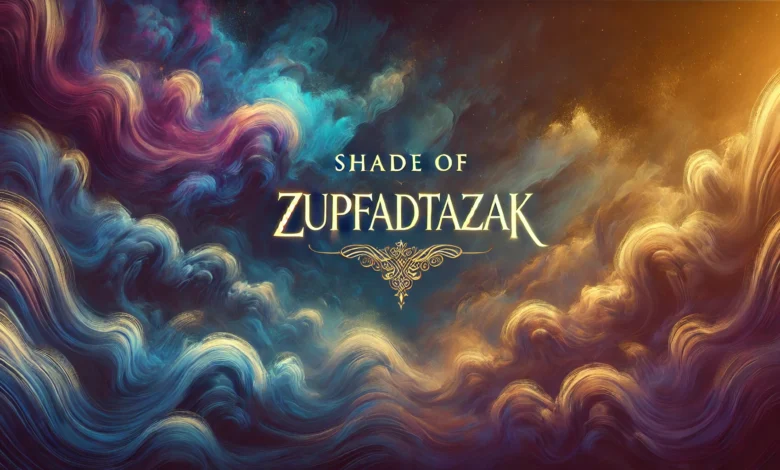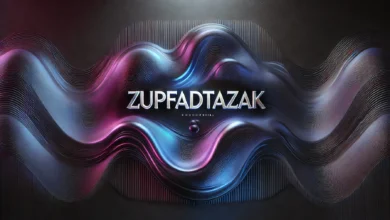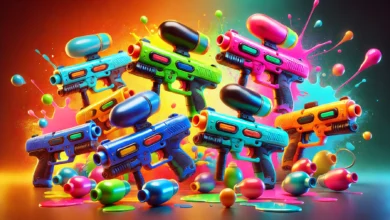The Mysterious Shade of Zupfadtazak: A Symbol of Modern Expression and Depth

In the vast world of color, every Shade of Zupfadtazak tells a story. But there’s one particular hue that has captured the curiosity of artists, designers, and cultural thinkers alike — the shade of Zupfadtazak. Mysterious, evocative, and hard to define, this color has become more than just a tone on a palette. It’s an idea — a representation of modern emotion, individuality, and creativity that goes beyond the visual spectrum.
Let’s dive into what makes the shade of Zupfadtazak so fascinating, how it influences design and culture, and why it’s being seen as a color for the future.
What Exactly Is the Shade of Zupfadtazak?
The shade of Zupfadtazak isn’t something you can simply describe as blue, green, or gray. It exists somewhere in between — a complex blend that shifts its appearance depending on the light, surroundings, and perception of the viewer. Some say it’s a muted metallic tone, while others describe it as an earthy deep tint with a reflective, soulful essence.
At its core, Zupfadtazak is not just a pigment — it’s a concept. Artists often refer to it as a “living color,” one that embodies transformation and duality. In one moment, it feels cool and calm; in another, it radiates warmth and mystery. This dynamic nature is what makes the shade of Zupfadtazak stand out in the modern palette of design and art.
Interestingly, many colorists believe Zupfadtazak symbolizes balance — the meeting point between natural and digital worlds. It’s a tone that reflects how we, as humans, are constantly shifting between reality and technology, emotion and logic, old and new.
The Origin and Evolution of the Shade
While the name “Shade of Zupfadtazak” might sound newly invented, its inspiration runs deep in artistic history. The term is thought to have originated from a blend of old linguistic roots — a mixture of abstract European and Middle Eastern influences that together create a sense of mystery.
In early digital art forums, “Zupfadtazak” was coined by experimental designers who wanted to describe a tone that couldn’t fit into existing color categories. It wasn’t pastel, neon, or earth-tone — it was something altogether different. From that niche online culture, the shade spread through social media, fashion editorials, and visual art movements.
Today, Zupfadtazak has evolved into more than just a color — it’s become a creative identity. People use it to express individuality, to stand out without shouting, and to represent quiet confidence. It embodies subtle strength and emotional depth, qualities that have become essential in modern aesthetics.
Zupfadtazak in Fashion and Design
In fashion, the shade of Zupfadtazak has become a quiet revolution. Designers appreciate its versatility — it pairs beautifully with both neutral palettes and bold, vibrant accents. Whether it’s used in streetwear or high-end couture, this shade offers a perfect balance between sophistication and originality.
Imagine a Zupfadtazak-toned jacket — it doesn’t scream for attention, but once you notice it, you can’t look away. It has a way of reflecting personality without being loud. This understated luxury is what makes it a designer favorite, especially in collections that aim for timelessness and edge simultaneously.
In interior design, Zupfadtazak has found a new home. It’s often used on walls, furniture, or metallic details to bring a sense of calm sophistication. The shade transforms a space, giving it depth without overwhelming it. It’s ideal for those who want their environment to feel modern but grounded, elegant yet personal.
Even digital designers use Zupfadtazak-inspired tones in UI and brand identities because the color feels futuristic but familiar — a perfect visual metaphor for innovation rooted in human warmth.
The Psychological Meaning Behind the Shade
Every color triggers an emotion — and the shade of Zupfadtazak is no exception. Psychologically, this tone represents stability, reflection, and transformation. It embodies a mindset that embraces both creativity and calmness.
People drawn to this shade are often introspective and visionary. They value subtlety and meaning over surface-level flashiness. Zupfadtazak resonates with thinkers, innovators, and those who seek balance in a fast-paced world.
There’s also something meditative about it. When viewed for long periods, the shade has a grounding effect, helping people feel centered and thoughtful. That’s why it’s becoming increasingly popular in mindfulness apps, lifestyle branding, and even therapy spaces.
In short, Zupfadtazak isn’t just a color you see — it’s a color you feel.
Cultural Influence: From Art Studios to Digital Screens
It’s fascinating how quickly Zupfadtazak has seeped into cultural consciousness. Artists have used it to symbolize ambiguity, mystery, and the blurred lines between emotion and intellect. Its chameleon-like quality makes it a perfect metaphor for the complexity of modern identity.
In digital spaces, Zupfadtazak is used to communicate subtle authority. You’ll find it in sleek tech branding, modern app interfaces, and even film color grading. Directors and visual storytellers love it because it gives scenes an emotional undertone that feels both futuristic and nostalgic.
Musicians and visual creators also reference the “shade of Zupfadtazak” in their work as a poetic symbol. It’s been used as a metaphor for the “space between” — between love and loss, clarity and confusion, chaos and calm. That emotional ambiguity is what makes it so universally appealing.
How to Use the Shade of Zupfadtazak in Your Own Style
You don’t have to be a professional designer to enjoy the beauty of this shade. There are plenty of creative ways to incorporate Zupfadtazak into your life, from personal fashion to workspace design.
Start small — maybe a Zupfadtazak notebook cover, a phone case, or a piece of décor. It instantly adds a touch of sophistication without feeling too polished. In clothing, it pairs well with deep blacks, soft whites, and muted golds. The combination creates a balanced and intelligent look.
If you’re into digital art or content creation, using the shade of Zupfadtazak in your visuals can set a unique tone. It helps your work stand out in subtle ways — professional, mysterious, and emotionally resonant.
The key is to use it sparingly and intentionally. Like any beautiful color, its true charm comes from balance.
Why Zupfadtazak Represents the Future of Aesthetic Expression
As our world becomes increasingly digital, we crave authenticity — and Zupfadtazak offers just that. It’s not artificial or overly commercial; it’s a shade that feels real. Its organic undertones and futuristic sheen make it a bridge between two worlds — the tangible and the virtual.
Designers predict that colors like Zupfadtazak will dominate the next era of aesthetics. It’s perfect for expressing nuanced ideas, hybrid cultures, and layered identities — all of which define the modern generation.
In essence, the shade of Zupfadtazak captures the mood of our times: thoughtful, evolving, and deeply connected to emotion. It reminds us that even in a fast-changing world, there’s beauty in subtlety and strength in softness.
Final Thoughts: The Beauty of a Shade Beyond Definition
The shade of Zupfadtazak isn’t about fitting into a box or matching a trend. It’s about transcending definition — a visual reminder that identity and art are fluid. Whether you see it as a color, a mood, or a metaphor, it represents a quiet power that inspires creativity and reflection.
It’s rare for a color to evoke such depth, but Zupfadtazak does it effortlessly. It teaches us that beauty doesn’t always need to be bright or obvious; sometimes, it hides in the shadows — waiting to be discovered by those who take a closer look.
So, the next time you encounter this shade — whether in art, fashion, or design — pause and let it speak to you. You might just see a reflection of yourself in the shade of Zupfadtazak.



